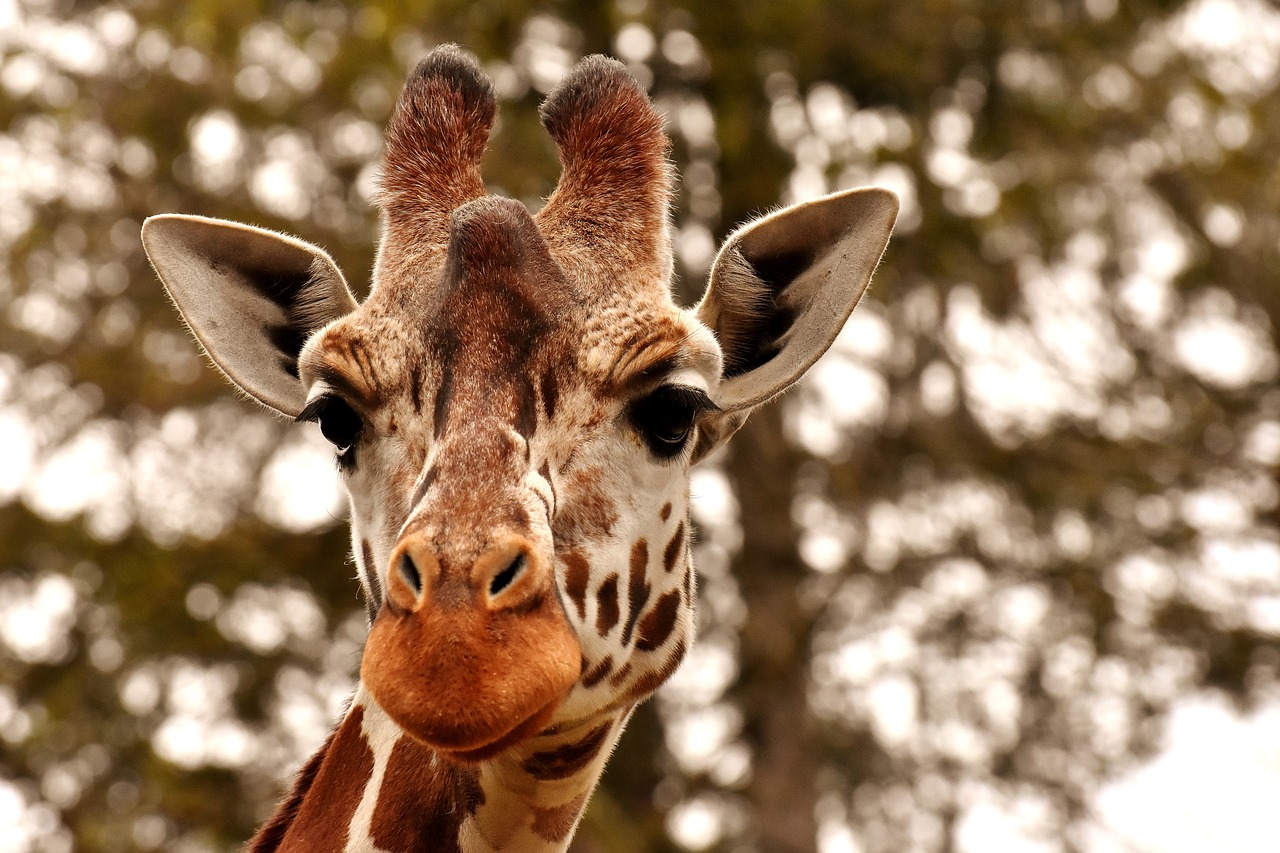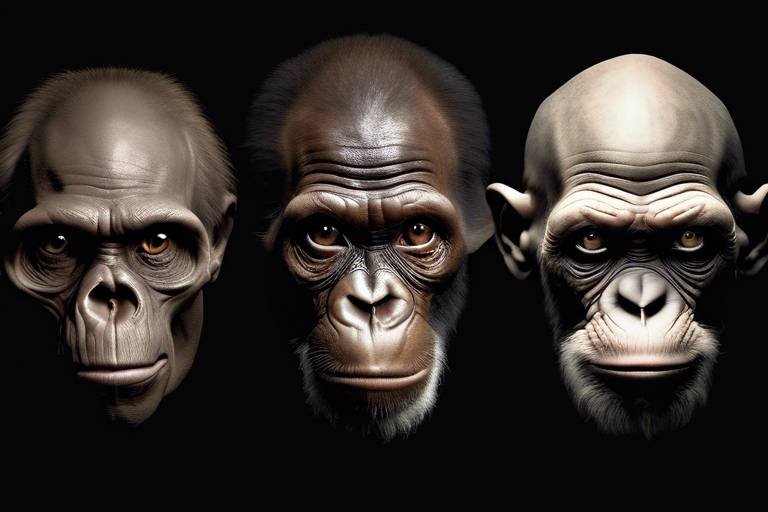The Philosophy behind Animal Rights
The concept of animal rights is not just a modern trend; it’s a profound philosophical inquiry that challenges our ethical frameworks and societal norms. As we delve into the intricate web of human-animal relationships, we uncover a myriad of ethical considerations that compel us to rethink our responsibilities towards non-human beings. Have you ever stopped to ponder why we treat some animals as companions while others are viewed merely as resources? This disparity raises critical questions about the moral obligations we hold as a society. The philosophy behind animal rights is deeply rooted in the recognition of animals as sentient beings, capable of experiencing pain, joy, and a range of emotions. This understanding urges us to extend our ethical considerations beyond human interests and to acknowledge the intrinsic value of all living creatures.
Throughout history, the treatment of animals has evolved dramatically, reflecting shifts in philosophical thought and cultural attitudes. From ancient civilizations that revered animals as sacred beings to contemporary movements advocating for animal liberation, the journey has been complex and often contentious. The moral landscape is dotted with pivotal moments that have shaped our understanding of animal welfare, prompting society to question long-standing practices that prioritize human benefits over animal rights.
At the heart of this philosophical exploration lies the debate between utilitarianism and deontological ethics. Utilitarianism, with its focus on maximizing overall happiness, often leads to discussions about the trade-offs between human interests and animal welfare. This raises the question: is it acceptable to sacrifice the well-being of animals for the greater good? On the other hand, deontological perspectives argue for the inherent rights of animals, suggesting that their welfare should be protected regardless of the consequences. This dichotomy presents a rich tapestry of ethical dilemmas that challenge our understanding of justice and morality.
As we examine the implications of animal sentience, it becomes clear that our ethical frameworks must adapt to accommodate this understanding. Scientific research has illuminated the cognitive and emotional capacities of various species, prompting a reevaluation of how we engage with animals across different sectors, including agriculture, entertainment, and research. The growing body of evidence supporting animal sentience calls for a transformation in our legal and ethical approaches to animal rights.
In conclusion, the philosophy behind animal rights is a dynamic field that invites us to reflect on our values and practices. It challenges us to consider the moral implications of our actions and to advocate for a more compassionate world where the rights of all beings are respected. As we navigate this complex terrain, let us remain open to the evolving dialogue surrounding animal rights and the ethical responsibilities that come with it.
- What are animal rights? Animal rights refer to the belief that non-human animals should be afforded certain legal and moral protections, recognizing their intrinsic value and ability to suffer.
- Why is animal sentience important? Understanding animal sentience is crucial because it influences how we treat animals and shapes our ethical considerations regarding their welfare and rights.
- What is the difference between utilitarianism and deontological ethics? Utilitarianism focuses on maximizing overall happiness, while deontological ethics emphasizes the inherent rights and duties owed to individuals, regardless of the outcomes.
- How can I advocate for animal rights? You can advocate for animal rights by supporting organizations that promote animal welfare, raising awareness about ethical issues, and making informed choices about the products you consume.

Historical Context of Animal Rights
The journey toward recognizing animal rights is a fascinating tale woven through centuries of philosophical thought and social change. It’s not merely a modern concept; rather, it has roots that stretch back to ancient civilizations. For instance, in ancient India, the principle of *ahimsa*, or non-violence, was a cornerstone of Jainism and Buddhism, advocating for the protection of all living beings. This early recognition of the intrinsic value of animals set the stage for later philosophical debates.
Fast forward to the 18th century, when Enlightenment thinkers began to question the moral status of animals. Philosophers like Jeremy Bentham and Immanuel Kant laid the groundwork for animal rights discourse. Bentham famously posed the question, “Can they suffer?” suggesting that the capacity to suffer is a crucial factor in determining moral consideration. This was revolutionary at the time, as it challenged the prevailing notion that animals were merely property or tools for human use.
As the 19th century rolled in, the industrial revolution brought about significant changes in how animals were treated, particularly in agriculture and experimentation. The rise of factory farming and animal testing raised ethical concerns, prompting the formation of the first animal welfare organizations. The Society for the Prevention of Cruelty to Animals (SPCA), founded in 1824 in the UK, was one of the first formal movements aimed at protecting animal rights. This era marked a pivotal shift, as people began to advocate not just for humane treatment but for the recognition of animals as beings deserving of rights.
Throughout the 20th century, the animal rights movement gained momentum, fueled by the publication of influential works such as Peter Singer's *Animal Liberation* in 1975. Singer’s utilitarian approach argued that the suffering of animals should be weighed equally with human suffering, which ignited a global conversation about ethical consumption and animal welfare. This period also saw the establishment of various animal rights organizations, including PETA (People for the Ethical Treatment of Animals) in 1980, which have since played a crucial role in raising awareness and advocating for legislative changes.
Today, the historical context of animal rights is a rich tapestry of evolving thought and activism. As society continues to grapple with ethical considerations surrounding animal welfare, understanding this historical backdrop is essential. It provides a lens through which we can examine our current practices and the moral obligations we hold toward non-human animals.
- What are the main historical milestones in the animal rights movement?
The animal rights movement has seen significant milestones, including the establishment of the SPCA in 1824, the publication of *Animal Liberation* in 1975, and the formation of various advocacy organizations like PETA. - How did philosophical thought influence animal rights?
Philosophers such as Bentham and Singer have profoundly impacted the discourse on animal rights by framing ethical considerations around the capacity of animals to suffer. - What role did the industrial revolution play in animal rights?
The industrial revolution led to the rise of factory farming and animal experimentation, prompting ethical concerns and the formation of animal welfare organizations.

Key Philosophical Theories
The discussion surrounding animal rights is deeply rooted in various philosophical theories that shape our understanding of ethics and morality. Two of the most prominent frameworks are utilitarianism and deontology. Each of these theories offers a unique perspective on how we should treat non-human animals, and they often lead to significantly different conclusions about our moral obligations.
Utilitarianism, championed by philosophers like Jeremy Bentham and John Stuart Mill, posits that the rightness or wrongness of an action is determined by its consequences. In essence, it advocates for actions that promote the greatest happiness for the greatest number. This principle can be applied to animal rights by weighing the benefits to humans against the suffering of animals. For instance, one might argue that factory farming is justifiable if it leads to lower meat prices and increased human welfare. However, this raises profound ethical questions: can we truly justify the suffering of countless animals for the sake of human convenience? In this context, utilitarianism can sometimes seem to prioritize human interests over animal welfare, leading to a moral dilemma.
On the other hand, deontological ethics, associated with philosophers like Immanuel Kant, emphasizes the importance of duties and rights. This perspective suggests that animals possess inherent rights that must be respected, regardless of the outcomes. According to this view, it is morally wrong to treat animals merely as means to an end, such as for food or scientific experimentation. Deontologists argue that the capacity to suffer and experience life grants animals a moral status that demands respect. This challenges utilitarian views by asserting that some actions, like animal cruelty, are inherently wrong, irrespective of the consequences.
To further illustrate these philosophical theories, let’s break down their key characteristics in the following table:
| Philosophical Theory | Key Focus | Implications for Animal Rights |
|---|---|---|
| Utilitarianism | Consequences of actions | May justify animal suffering for human benefit |
| Deontology | Duties and rights | Emphasizes inherent rights of animals |
Both theories prompt critical questions about our responsibilities towards animals. For instance, how do we balance the interests of humans with the rights of animals? Is it ethical to exploit animals for research if it could lead to significant human benefits? These questions are at the heart of ongoing debates about animal rights and welfare.
Moreover, the application of these theories in real-world scenarios often leads to complex ethical dilemmas. For example, in the case of animal testing, utilitarianism might support the practice if it leads to medical breakthroughs that save human lives. However, from a deontological standpoint, the act of inflicting pain on animals, regardless of the potential benefits, would be considered morally unacceptable.
In summary, the philosophical theories of utilitarianism and deontology offer contrasting yet essential frameworks for understanding animal rights. While utilitarianism focuses on the outcomes of our actions, deontological ethics centers on the moral duties we owe to animals. The ongoing dialogue between these perspectives is crucial as we navigate the ethical landscape of our relationship with non-human beings.

Utilitarianism and Animal Welfare
Utilitarianism, a philosophical doctrine primarily associated with thinkers like Jeremy Bentham and John Stuart Mill, is grounded in the principle of achieving the greatest happiness for the greatest number. This ethical framework prompts us to consider the implications of our actions not only on human beings but also on non-human animals. After all, if we are to advocate for the welfare of animals, we must understand how utilitarianism can both support and challenge our moral obligations towards them.
At its core, utilitarianism evaluates the consequences of actions, suggesting that a morally right act is one that maximizes overall happiness. This leads to the question: how do we quantify happiness and suffering across species? For instance, if a factory farm prioritizes profit by raising thousands of animals in cramped conditions, a utilitarian perspective might argue that the economic benefits to society outweigh the suffering of those animals. However, this perspective can be deeply troubling, as it risks reducing sentient beings to mere numbers on a balance sheet.
Utilitarianism’s focus on collective welfare can create a moral dilemma when it comes to animal welfare. In many cases, the interests of animals are pitted against human desires, such as in the case of animal testing for medical advancements. Proponents might argue that the potential benefits to human health justify the use of animals in research. Yet, this raises an ethical question: can we truly justify the suffering of individual animals for the sake of potential human gain?
To better illustrate these points, consider the following table that outlines some common scenarios where utilitarianism intersects with animal welfare:
| Scenario | Utilitarian Perspective | Ethical Concerns |
|---|---|---|
| Factory Farming | Economic benefits and food supply | Animal suffering and rights |
| Animal Testing | Potential medical breakthroughs | Individual animal rights vs. collective human benefits |
| Entertainment (Zoos, Circuses) | Public enjoyment and education | Quality of life and natural habitat |
Critics of utilitarianism argue that this framework can often lead to justifications for animal suffering, as it may prioritize the happiness of the majority over the rights of the individual. This is particularly concerning in practices where animals are subjected to pain and distress for the perceived greater good. As we navigate these complex ethical waters, it's essential to balance utilitarian ideals with a recognition of individual rights and welfare. After all, should the happiness of the many ever come at the expense of the suffering of the few?
In conclusion, while utilitarianism provides a valuable lens through which to evaluate animal welfare, it also presents significant challenges. As society continues to grapple with these ethical dilemmas, the dialogue surrounding animal rights must evolve. We must strive to create a framework that respects the intrinsic value of all sentient beings, ensuring that their welfare is not merely an afterthought in the pursuit of human happiness.
- What is utilitarianism? Utilitarianism is an ethical theory that suggests that the best action is the one that maximizes overall happiness or well-being.
- How does utilitarianism apply to animal welfare? Utilitarianism evaluates the consequences of actions affecting both humans and animals, often leading to debates about the moral implications of prioritizing human interests over animal welfare.
- What are the criticisms of utilitarianism in the context of animal rights? Critics argue that utilitarianism can justify animal suffering, as it may prioritize the happiness of the majority over the rights and well-being of individual animals.

Critiques of Utilitarianism
Utilitarianism, while a popular ethical framework, faces significant critiques that challenge its validity and applicability, especially in the context of animal rights. One of the primary concerns is that this philosophy often prioritizes the collective happiness of the majority over the individual rights of sentient beings. This can lead to troubling justifications for animal suffering. For instance, if the majority benefits significantly from the exploitation of a minority—such as in factory farming—utilitarianism might rationalize this as acceptable. But can we really justify the suffering of individual animals for the sake of greater human pleasure? This question strikes at the heart of ethical considerations.
Critics argue that this approach can create a slippery slope where the rights of individuals, including animals, are easily overlooked. When the focus is solely on outcomes, the inherent value of each being is diminished. Imagine a scenario where a group of people decides that the life of a single animal is expendable for the sake of a delicious meal. Such reasoning can lead to a moral paradox where the suffering of one is deemed acceptable for the pleasure of many, which raises profound ethical dilemmas.
Moreover, utilitarianism can sometimes promote a "numbers game" mentality, where the quantification of happiness becomes paramount. This reductionist view can ignore the qualitative aspects of well-being, such as the emotional and psychological experiences of animals. For example, a study might show that a large number of animals are being "happily" raised for food, but it fails to consider the trauma and distress they endure throughout their lives. This oversight can foster a troubling disconnect between perceived welfare and actual suffering.
Additionally, critics point out that utilitarianism lacks a robust framework for addressing the rights of individuals. It can be argued that animals possess inherent rights that should be respected, irrespective of the consequences. This perspective challenges the utilitarian framework, suggesting that moral obligations should not be contingent on outcomes but rather rooted in the recognition of an animal's intrinsic value. In this light, the critique becomes not just about the shortcomings of utilitarianism but also about advocating for a more rights-based approach to ethical treatment.
In summary, while utilitarianism offers a compelling lens through which to view ethical dilemmas, its application to animal rights is fraught with challenges. The critiques highlight a need for a more nuanced understanding that respects individual rights and acknowledges the complexities of animal suffering. As society continues to grapple with these ethical questions, it becomes increasingly clear that a singular focus on outcomes may not be sufficient to ensure the fair treatment of all sentient beings.
- What is utilitarianism in relation to animal rights?
Utilitarianism is an ethical framework that seeks the greatest good for the greatest number. In the context of animal rights, it raises questions about the balance between human benefits and animal welfare. - Why do critics oppose utilitarianism?
Critics argue that utilitarianism can overlook individual rights and justify animal suffering for the sake of collective happiness, leading to ethical dilemmas regarding the treatment of animals. - Are there alternatives to utilitarianism for animal rights?
Yes, deontological ethics emphasizes duties and rights, suggesting that animals have inherent rights that must be respected regardless of the consequences.

Practical Applications
When it comes to the practical applications of animal rights theories, the real world often presents a complex tapestry of ethical dilemmas and economic realities. For instance, in the realm of factory farming, the utilitarian perspective may argue that the production of meat feeds millions, yet it simultaneously raises serious ethical questions about the treatment of animals. Are we justified in prioritizing human consumption over the well-being of sentient beings? This conundrum illustrates the tension between utilitarianism and animal welfare.
In the context of animal testing, utilitarianism might suggest that the benefits of medical advancements for humans can outweigh the suffering inflicted on animals. However, this stance is increasingly scrutinized as society becomes more aware of animal sentience and the ethical implications of such practices. The question arises: can we truly justify the suffering of one species for the benefit of another? This moral quandary has led to the exploration of alternatives that align more closely with ethical treatment.
To further illustrate these complexities, consider the following table that outlines common practices in various industries alongside their ethical implications:
| Industry | Common Practices | Ethical Implications |
|---|---|---|
| Factory Farming | Intensive confinement, rapid growth hormones | Animal suffering, loss of natural behaviors |
| Animal Testing | Drug testing, cosmetic testing | Ethical concerns over suffering, availability of alternatives |
| Entertainment | Circuses, marine parks | Exploitation, unnatural living conditions |
As we navigate these practical applications, it becomes evident that businesses and policymakers face significant challenges in balancing ethical considerations with economic factors. Many companies are beginning to adopt more humane practices, driven by consumer demand for ethically sourced products. This shift is not merely a trend; it reflects a growing recognition of our moral obligations towards non-human animals.
In conclusion, the practical applications of animal rights theories are multifaceted and require ongoing dialogue and reflection. By examining how these ethical frameworks manifest in real-world scenarios, we can better understand the moral landscape surrounding animal treatment and strive for a more compassionate approach.
- What are animal rights? Animal rights refer to the belief that non-human animals have inherent rights and deserve to be treated with respect and compassion.
- How do utilitarianism and deontology differ in their approach to animal rights? Utilitarianism focuses on the consequences of actions and aims for the greatest good for the greatest number, while deontology emphasizes duties and rights, asserting that animals have rights that must be respected regardless of outcomes.
- What are some alternatives to animal testing? Alternatives include in vitro testing, computer modeling, and using human cell cultures to study biological processes without harming animals.
- How can I support animal rights? You can support animal rights by advocating for humane treatment, choosing cruelty-free products, and educating others about the ethical implications of animal exploitation.

Deontological Perspectives
When we dive into the realm of deontological ethics, we're stepping into a philosophy that prioritizes duties and rights over the consequences of actions. This approach posits that animals possess inherent rights that must be respected, irrespective of the outcomes. Imagine a world where every being, human or non-human, is treated with dignity simply because they exist. This is the essence of deontological thought—it challenges the utilitarian perspective that often justifies animal suffering for the sake of greater good.
At its core, deontology argues that certain actions are morally obligatory, permissible, or forbidden based on a set of rules or duties. For instance, one might argue that it is our duty to protect the rights of animals, just as we protect the rights of our fellow humans. This perspective raises profound questions: Should we really be measuring the value of a life based on its utility to humans? Or should we recognize and respect the intrinsic worth of all sentient beings?
Consider the implications of deontological ethics in various contexts. For example, in the realm of animal testing, a deontologist might argue that subjecting animals to experimentation violates their rights, regardless of the potential benefits to humanity. This perspective invites us to reflect on our moral obligations and the ethical frameworks we use to justify our actions. It challenges us to think critically about the moral landscape we navigate when deciding how to treat animals.
Moreover, deontological ethics encourages us to consider the principles of justice and fairness. It emphasizes that animals, much like humans, have interests and needs that deserve recognition and protection. The idea of animal rights is not just a modern trend; it has deep philosophical roots that urge us to respect the lives of all sentient beings. As we explore these ideas, we must ask ourselves: How can we align our actions with a moral framework that values the rights of animals?
In summary, deontological perspectives provide a vital counterpoint to utilitarianism, advocating for a moral stance that recognizes the inherent rights of animals. By embracing this philosophy, we can pave the way for a more ethical and compassionate treatment of non-human beings, ensuring that their rights are respected and upheld in our society.
- What is deontological ethics? Deontological ethics is a moral philosophy that emphasizes duties and rights, suggesting that certain actions are inherently right or wrong regardless of their consequences.
- How does deontology apply to animal rights? Deontology posits that animals have inherent rights that must be respected, challenging the idea that their suffering can be justified for human benefit.
- Can you give an example of deontological thinking in animal treatment? An example would be opposing animal testing on the grounds that it violates the rights of animals, regardless of the potential medical advancements it may yield.
- Why is it important to consider animal rights? Recognizing animal rights is crucial for fostering a more ethical society that respects all sentient beings and promotes compassionate treatment.

Animal Sentience and Rights
Understanding animal sentience is crucial when discussing animal rights. Sentience refers to the capacity of an animal to experience sensations such as pain, pleasure, and emotions. This recognition has profound implications for how we view our moral obligations towards non-human animals. If we accept that animals can feel pain as we do, it becomes increasingly difficult to justify practices that cause suffering. Imagine if you were in a situation where your feelings and experiences were disregarded simply because someone thought you were less important. This analogy highlights the ethical dilemma we face when considering the rights of animals.
Scientific research has provided compelling evidence that many animals possess a level of consciousness and emotional depth that we once reserved for humans alone. For instance, studies have shown that elephants grieve for lost companions, and dolphins exhibit complex social behaviors that suggest a rich emotional life. These findings challenge long-held beliefs about the hierarchy of species and push us to reevaluate our ethical frameworks. In fact, many animals, such as primates, dogs, and even certain birds, demonstrate behaviors that indicate a sophisticated understanding of their environment and social structures.
As a society, we must grapple with the implications of recognizing animal sentience. This acknowledgment leads to a shift in the legal and moral landscapes surrounding animal rights. For example, some countries have begun to legislate on the basis of sentience, granting animals certain rights and protections. This movement reflects a growing consensus that animals are more than mere commodities; they are beings with their own interests and experiences. As we delve deeper into the scientific studies on sentience, it becomes clear that our ethical considerations must evolve in tandem.
Moreover, the legal frameworks governing animal rights are increasingly influenced by our understanding of sentience. Laws that once viewed animals as property are gradually shifting towards recognizing their intrinsic value. In many regions, this has resulted in stricter regulations regarding animal welfare, particularly in industries like agriculture and entertainment. However, there is still a long way to go. Many animals remain vulnerable to exploitation, and advocacy groups are working tirelessly to ensure that their rights are respected and upheld.
In conclusion, the recognition of animal sentience is not just a scientific matter; it is a moral imperative that challenges us to reconsider our relationship with other species. As we continue to learn more about the emotional and cognitive lives of animals, we must align our ethical frameworks and legal systems to reflect this knowledge. By doing so, we can create a more compassionate world where the rights of all sentient beings are acknowledged and protected.
- What is animal sentience?
Animal sentience refers to the ability of animals to experience sensations such as pain, pleasure, and emotions, indicating their capacity for subjective experiences.
- Why is recognizing animal sentience important?
Recognizing animal sentience is crucial for understanding our moral obligations towards animals, leading to more humane treatment and legal protections.
- How does animal sentience influence laws and regulations?
As society acknowledges animal sentience, laws are evolving to grant animals certain rights and protections, moving away from viewing them solely as property.
- What are some examples of sentient behavior in animals?
Examples include elephants mourning their dead, dolphins displaying complex social interactions, and dogs showing empathy towards their owners.

Scientific Studies on Sentience
This article explores the ethical considerations, historical context, and philosophical arguments surrounding animal rights, aiming to shed light on the moral obligations humans have towards non-human animals.
Understanding the evolution of animal rights involves examining key philosophical movements and historical milestones that have shaped contemporary views on the treatment of animals throughout the ages.
Various philosophical theories, such as utilitarianism and deontology, provide frameworks for evaluating animal rights and ethical treatment, influencing how society perceives and addresses the needs of non-human beings.
Utilitarianism advocates for the greatest good for the greatest number, prompting discussions about the balance between human interests and animal welfare in ethical decision-making processes.
Critics argue that utilitarianism may overlook individual rights, leading to justifications for animal suffering, raising concerns about the moral implications of prioritizing collective happiness over individual well-being.
Examining how utilitarian principles are applied in real-world scenarios, such as factory farming and animal testing, reveals the complexities and challenges in balancing ethical considerations with economic factors.
Deontological ethics emphasizes duties and rights, suggesting that animals possess inherent rights that must be respected regardless of the consequences, challenging utilitarian approaches to animal treatment.
The recognition of animal sentience has profound implications for animal rights, as understanding animals' capacity to experience pain and pleasure influences ethical considerations and societal attitudes towards their treatment.
Scientific research has increasingly demonstrated that many non-human animals possess a level of sentience—the capacity to feel, perceive, and experience sensations. This growing body of evidence has significant implications for how we view and treat animals. For instance, studies involving various species, including mammals, birds, and even some invertebrates, have shown that they can experience a range of emotions, from joy to fear, and can suffer in ways similar to humans.
One landmark study published in the journal Nature highlighted the cognitive abilities of octopuses, revealing their problem-solving skills and complex behaviors that suggest a high degree of intelligence. Similarly, research on elephants has shown that they display empathy and can mourn their dead, indicating a profound emotional depth.
Moreover, the Cambridge Declaration on Consciousness, signed by a group of neuroscientists in 2012, asserts that many animals, including all mammals and birds, possess the neurological substrates necessary for consciousness. This declaration has sparked discussions about the ethical treatment of these sentient beings, challenging long-held beliefs that humans are the only creatures worthy of moral consideration.
To illustrate the breadth of research on animal sentience, consider the following table summarizing key findings from various studies:
| Species | Key Findings |
|---|---|
| Octopus | Problem-solving abilities and complex behaviors |
| Elephant | Empathy and mourning behaviors |
| Corvids (Crows) | Advanced tool use and social intelligence |
| Dogs | Emotional recognition and attachment to humans |
These findings compel us to rethink our ethical obligations toward animals. If they can feel pain and joy, should we not extend our moral considerations to their welfare? As society becomes more aware of these scientific revelations, the call for better treatment and rights for animals grows louder, challenging industries and individuals alike to reconsider their practices.
The use of animals in scientific research raises significant ethical questions regarding their rights, welfare, and the moral justification of sacrificing animal lives for human benefit.
Innovative methods, such as in vitro testing and computer modeling, offer alternatives to animal testing, promoting ethical research practices while reducing reliance on animal subjects.
Public attitudes toward animal rights and welfare are shifting, influenced by advocacy efforts, media representation, and growing awareness of ethical issues, driving changes in policy and consumer behavior.
- What is animal sentience? - Animal sentience refers to the capacity of animals to experience feelings, perceptions, and sensations.
- Why is animal sentience important for animal rights? - Recognizing sentience is crucial because it informs our ethical responsibilities toward animals, suggesting they deserve moral consideration and protection.
- What are some examples of sentient animals? - Many animals, including mammals, birds, and even some invertebrates like octopuses, have been shown to possess sentience.
- How do scientific studies influence animal rights legislation? - Research findings on animal sentience can lead to stronger legal protections and advocacy for better treatment of animals.

Legal Frameworks for Animal Rights
When we delve into the , we uncover a complex tapestry of laws and regulations designed to protect non-human beings. These frameworks vary significantly across different countries, reflecting cultural attitudes, historical contexts, and the level of awareness regarding animal welfare. In many jurisdictions, animals are classified as property, which complicates their legal standing and the protections afforded to them. This classification often leads to a disparity between the rights of animals and those of humans, raising critical questions about the morality of such distinctions.
In the United States, for instance, the Animal Welfare Act (AWA) serves as the primary federal legislation aimed at ensuring humane treatment of animals used in research, exhibition, transport, and by dealers. However, it is important to note that the AWA does not cover all animals; for example, it excludes birds, rats, and mice, which comprise a significant portion of research subjects. This exclusion highlights a significant gap in legal protections and raises ethical concerns about the treatment of these animals.
Across the Atlantic, the European Union has made strides in animal rights legislation. The Treaty of Lisbon, which came into force in 2009, recognizes animals as sentient beings, obligating member states to pay full regard to their welfare in formulating and implementing policies. This recognition has led to more comprehensive laws aimed at enhancing animal welfare, including regulations on the treatment of farm animals and bans on certain practices deemed inhumane.
To further illustrate the differences in legal frameworks, consider the following table, which outlines various countries and their respective animal rights laws:
| Country | Key Legislation | Scope of Protection |
|---|---|---|
| United States | Animal Welfare Act (AWA) | Limited (excludes many species) |
| United Kingdom | Animal Welfare Act 2006 | Comprehensive (covers all vertebrates) |
| Germany | Basic Law (Article 20a) | Comprehensive (recognizes animal welfare as a state objective) |
| India | Prevention of Cruelty to Animals Act, 1960 | Limited but evolving |
| New Zealand | Animal Welfare Act 1999 | Comprehensive (focus on humane treatment) |
Despite these advancements, there remain significant challenges in enforcing these laws effectively. In many cases, penalties for violations are minimal, and enforcement agencies may lack the resources or authority to act decisively. This leads to a troubling reality where animal suffering can persist despite existing legal protections. Moreover, the ethical implications of animal testing and exploitation continue to spark debate, with advocates calling for stronger laws and more rigorous enforcement to ensure that animal rights are upheld.
As public awareness grows and societal attitudes shift, there is a growing demand for reform in animal rights legislation. This includes calls for the recognition of animals as beings with inherent rights, rather than mere property. Such changes could lead to more robust protections and a reevaluation of practices that currently exploit animals for entertainment, research, and food production.
In conclusion, while there are frameworks in place aimed at protecting animal rights, the effectiveness of these laws is often undermined by loopholes, inadequate enforcement, and societal attitudes that prioritize human interests over animal welfare. As we continue to evolve in our understanding of animal sentience and rights, it is imperative that we advocate for stronger legal protections that reflect our moral obligations towards these vulnerable beings.
- What is the Animal Welfare Act? The Animal Welfare Act is a federal law in the United States that regulates the treatment of animals in research, exhibition, transport, and by dealers.
- Are all animals protected under the Animal Welfare Act? No, the AWA does not cover all animals; it excludes certain species, such as birds, rats, and mice.
- How does the EU approach animal rights? The EU recognizes animals as sentient beings and has implemented various regulations to enhance animal welfare across member states.
- What are some challenges in enforcing animal rights laws? Challenges include minimal penalties for violations, lack of resources for enforcement agencies, and societal attitudes that may prioritize human interests.

Ethical Implications of Animal Testing
Animal testing has long been a contentious issue, stirring deep ethical debates about the treatment of non-human beings in the name of scientific advancement. At its core, the ethical implications of animal testing challenge us to confront the moral value we place on animal lives versus the potential benefits to human health and well-being. Are we justified in sacrificing the lives of sentient beings for the sake of human progress? This question reverberates through the halls of science, ethics, and public opinion, making it a crucial topic for discussion.
One of the most significant ethical concerns surrounding animal testing is the welfare of the animals involved. Animals used in experiments often endure pain, suffering, and distress, raising the question: is it ethical to inflict harm on an animal when alternative research methods may exist? Proponents of animal testing argue that it is necessary for medical breakthroughs, but critics suggest that the suffering caused to these animals is not justifiable, especially when many of the results from animal testing do not translate effectively to human biology.
To better understand the ethical landscape, we must also consider the principle of sentience. Sentient beings, including many animals, have the capacity to feel pain and experience emotions. This recognition has led to a growing consensus that animals deserve certain rights and protections. As a result, various organizations and advocates are calling for stricter regulations on animal testing, emphasizing the need for humane treatment and the consideration of alternatives.
In recent years, there has been an increasing push for the development and implementation of alternative methods to animal testing. These alternatives not only aim to reduce the use of animals in research but also seek to provide more accurate and humane solutions. Some of these methods include:
- In vitro testing: Using cell cultures to study biological processes.
- Computer modeling: Simulating human biology and disease processes to predict outcomes.
- Organs-on-chips: Miniaturized devices that mimic human organ functions.
These innovative approaches not only address ethical concerns but also enhance the reliability of research outcomes, as they are often more relevant to human biology than animal models. However, the transition to these methods requires significant investment and commitment from the scientific community, regulatory agencies, and funding bodies.
Public perception plays a crucial role in shaping the future of animal testing. As awareness of animal rights issues grows, so does the demand for ethical practices in research. Advocacy groups work tirelessly to educate the public about the ethical implications of animal testing, leading to a shift in consumer behavior and policy changes. This evolving landscape highlights the importance of ethical considerations in scientific research and the need for ongoing dialogue between scientists, ethicists, and the public.
In conclusion, the ethical implications of animal testing are complex and multifaceted, requiring a careful balance between scientific progress and the moral obligations we hold towards animals. As society continues to grapple with these issues, the hope is that we can find a path that respects the rights of all sentient beings while still advancing human health and knowledge.
- What is animal testing? Animal testing refers to the use of non-human animals in experiments and research to assess the safety and effectiveness of products, particularly in the fields of medicine and cosmetics.
- Why is animal testing controversial? It is controversial because it raises ethical concerns about the treatment of animals, their ability to feel pain, and whether their suffering is justified for human benefit.
- Are there alternatives to animal testing? Yes, alternatives include in vitro testing, computer modeling, and organs-on-chips, which aim to reduce or eliminate the need for animal subjects in research.
- How can I support animal rights? You can support animal rights by advocating for humane treatment, supporting organizations that promote alternatives to animal testing, and educating others about the ethical implications of animal research.

Alternatives to Animal Testing
As society becomes increasingly aware of the ethical implications surrounding animal testing, researchers are actively seeking alternatives that do not involve the use of animals. These alternatives are not just a response to ethical concerns; they also promise to enhance the reliability and relevance of scientific research. Traditional animal testing has long been criticized for its inability to accurately predict human responses, leading to a push for innovative methods that can yield more precise results.
One of the most promising alternatives is in vitro testing, which involves studying cellular and tissue cultures outside of a living organism. This method allows scientists to observe biological processes in a controlled environment, providing insights into how drugs interact with human cells. For instance, researchers can use human cell lines to assess toxicity and efficacy without subjecting animals to potentially harmful experiments.
Another groundbreaking approach is the use of computer modeling and simulations. By utilizing advanced algorithms and artificial intelligence, scientists can create virtual models that simulate human biology and predict how substances will behave in the human body. This not only saves time and resources but also significantly reduces the need for animal testing. Furthermore, these models can be continuously updated with new data, improving their accuracy over time.
Additionally, organs-on-chips technology is revolutionizing the way researchers conduct experiments. These micro-engineered devices mimic the functions of human organs, allowing for the study of drug interactions and disease processes in a more human-relevant context. For example, a liver-on-a-chip can help researchers understand how a drug is metabolized without using live animals.
Despite these advancements, it is important to acknowledge the challenges that come with transitioning to these alternatives. While they offer significant advantages, there are still regulatory hurdles and a need for widespread acceptance within the scientific community. Education and advocacy are crucial to ensure that these methods are integrated into mainstream research practices.
In summary, the shift towards alternatives to animal testing is not just a trend; it represents a fundamental change in how we approach scientific research. By embracing in vitro methods, computer modeling, and organs-on-chips technology, researchers can conduct ethical and effective studies that prioritize both human health and animal welfare. This evolution in research practices is essential for fostering a more humane and scientifically sound future.
- What are the main alternatives to animal testing? The main alternatives include in vitro testing, computer modeling, and organs-on-chips technology.
- Why is animal testing still used if there are alternatives? Animal testing is still used due to regulatory requirements and the need for validation of new methods.
- How can I support the shift towards alternatives to animal testing? You can support this shift by advocating for humane research practices, educating others about alternatives, and supporting organizations that promote ethical research.

Public Perception and Advocacy
The landscape of animal rights is continually evolving, influenced by shifts in public perception and the tireless efforts of advocates who champion the cause of non-human animals. Today, more than ever, people are beginning to recognize that animals are not merely resources for human use but sentient beings deserving of respect and compassion. This transformation in mindset is akin to a ripple effect, where each wave of awareness leads to broader discussions about ethical treatment and rights. But what exactly is driving this change?
One major factor is the rise of social media and digital platforms, which have become powerful tools for advocacy. Organizations dedicated to animal rights leverage these platforms to share compelling stories, shocking statistics, and emotional imagery that resonate with audiences. The ability to reach millions instantly allows for the rapid dissemination of information that can spark outrage or inspire compassion. For instance, viral videos showcasing the harsh realities of factory farming have prompted many to reconsider their dietary choices, leading to a surge in vegetarianism and veganism.
Moreover, public perception is increasingly shaped by a growing body of scientific research that highlights the cognitive and emotional capacities of animals. Studies revealing that animals can experience pain, joy, and even complex emotions challenge long-held beliefs about human superiority and the justification for animal exploitation. As more people become aware of these findings, they are more likely to advocate for changes in legislation and consumer behavior that reflect a more ethical stance towards animals.
Advocacy efforts are also bolstered by the collaboration between various organizations, activists, and even celebrities who use their platforms to raise awareness. These alliances create a formidable force that can influence public opinion and drive legislative change. For example, campaigns such as Meatless Monday and Adopt, Don't Shop have gained traction, encouraging individuals to make conscious choices that benefit both animals and the environment.
However, the journey towards widespread acceptance of animal rights is not without its challenges. There are still significant cultural and economic barriers to overcome. In many societies, traditional practices involving animal use are deeply ingrained, and shifting these perspectives requires sustained effort and education. Furthermore, industries that rely on animal exploitation often push back against advocacy efforts, framing them as threats to jobs and economic stability. This creates a complex battleground where advocates must navigate not only ethical considerations but also the realities of economic dependence.
In conclusion, the public perception of animal rights is undergoing a significant transformation, driven by advocacy, education, and a growing understanding of animal sentience. As more individuals recognize their moral obligations towards animals, the movement for animal rights gains momentum, leading to changes in policies, consumer behavior, and societal norms. The question remains: how can we continue to foster this positive change and ensure that the rights of all sentient beings are respected?
- What are animal rights? Animal rights refer to the idea that non-human animals have inherent rights and should be treated with respect, free from exploitation and suffering.
- Why is public perception important for animal rights? Public perception influences legislation, consumer behavior, and societal norms regarding the treatment of animals, making it crucial for advocacy efforts.
- How can individuals contribute to animal rights advocacy? Individuals can contribute by educating themselves, supporting ethical brands, participating in advocacy campaigns, and adopting a plant-based diet.
- What role does social media play in animal rights advocacy? Social media serves as a platform for sharing information, raising awareness, and mobilizing support for animal rights initiatives.
Frequently Asked Questions
- What are animal rights?
Animal rights refer to the idea that non-human animals have inherent rights similar to human rights. This philosophy argues that animals deserve to live free from exploitation, harm, and suffering, emphasizing their moral consideration in society.
- Why is the historical context of animal rights important?
Understanding the historical context helps us see how philosophical movements and societal attitudes towards animals have evolved. It reveals the milestones that have shaped our current views and informs ongoing debates about animal welfare.
- How do utilitarianism and deontology differ in their approach to animal rights?
Utilitarianism focuses on the consequences of actions, advocating for the greatest good for the greatest number, which can sometimes justify animal suffering. In contrast, deontology emphasizes inherent rights and duties, arguing that animals have rights that must be respected, regardless of the outcomes.
- What is animal sentience, and why does it matter?
Animal sentience refers to the capacity of animals to experience feelings such as pain and pleasure. Recognizing sentience is crucial as it influences ethical considerations and societal attitudes towards how we treat animals, pushing for more humane practices across various industries.
- Are there alternatives to animal testing?
Yes! Alternatives to animal testing include methods like in vitro testing, computer modeling, and advanced technologies that simulate human biology. These approaches aim to reduce reliance on animal subjects while promoting ethical research practices.
- How is public perception of animal rights changing?
Public perception is shifting due to increased advocacy, media coverage, and awareness of ethical issues related to animal welfare. This change is driving new policies and influencing consumer behavior, leading to greater demand for humane treatment of animals.
- What legal protections exist for animals?
Legal protections for animals vary by country and region but generally include laws against cruelty, neglect, and exploitation. However, there are ongoing debates about the adequacy of these laws and the need for reform to better protect animal rights.



















